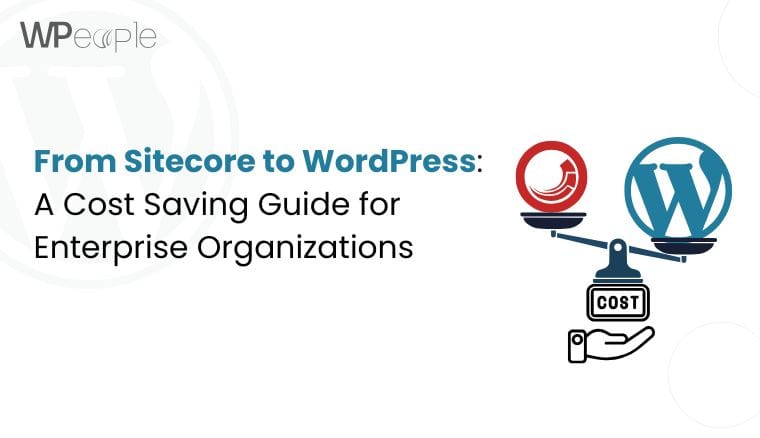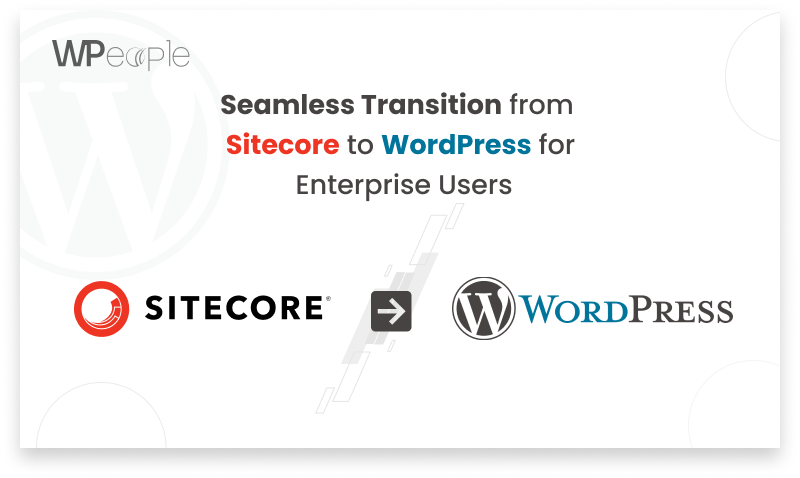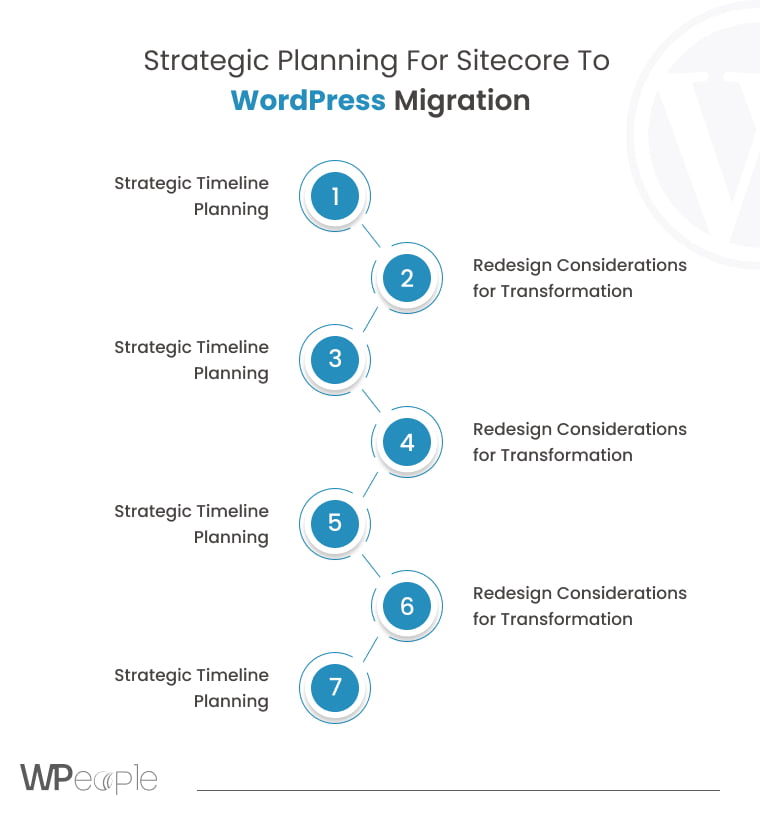In today’s digital landscape, large enterprises are increasingly scrutinizing their technology investments, particularly in content management systems (CMS). The decision to migrate from a premium enterprise CMS like Sitecore to WordPress represents a significant opportunity for organizations to optimize their digital infrastructure while substantially reducing costs. This comprehensive guide explores why and how enterprises can successfully transition from Sitecore to WordPress, potentially saving millions in the process.
Why CMS Migration Matters for Large Enterprises
The choice of a CMS impacts every aspect of an organization’s digital presence, from content creation and management to user experience and operational costs. As digital transformation accelerates, enterprises must ensure their CMS infrastructure delivers value while remaining cost-effective. The migration from Sitecore to WordPress presents an opportunity to achieve both objectives without compromising functionality or scalability.
Understanding Sitecore and WordPress
What is Sitecore?
Sitecore has long been recognized as a premium enterprise-level CMS, offering comprehensive digital experience management capabilities. Its feature set includes advanced personalization, multi channel content delivery, and sophisticated marketing automation tools. Typically, Sitecore serves large organizations with complex digital needs and substantial budgets.
The platform’s strengths lie in its enterprise-grade security, comprehensive digital experience management, and ability to handle complex content relationships. However, these capabilities come with significant costs in terms of licensing, infrastructure, and specialized development resources.
What is WordPress?
WordPress has evolved from a simple blogging platform to a robust, enterprise-capable CMS powering over 40% of all websites. Modern WordPress offers extensive functionality through its core features and vast plugin ecosystem. It provides flexibility, scalability, and enterprise-grade capabilities when properly configured and hosted.
The platform excels in content management, user-friendly interfaces, and rapid development capabilities. Its open-source nature and massive developer community contribute to its continuous improvement and adaptation to enterprise needs.
Comparing Costs: Sitecore vs. WordPress
Licensing Costs
Sitecore’s licensing structure typically involves substantial annual fees, often ranging from $50,000 to $200,000 or more, depending on the implementation size and features required. Additional costs arise from necessary modules and extensions.
In contrast, WordPress’s core software remains free and open-source. Enterprise organizations primarily invest in premium themes, plugins, and hosting solutions, which typically amount to a fraction of Sitecore’s licensing costs.
Development and Customization Costs
Sitecore development requires specialized expertise, commanding premium rates due to the platform’s complexity and the relative scarcity of experienced developers. Projects often require longer development cycles and more extensive testing phases.
WordPress development benefits from a larger talent pool and more straightforward development processes. While enterprise-grade WordPress development still requires expertise, the associated costs are generally lower, and development cycles are typically shorter.
Hosting and Maintenance
Sitecore’s hosting requirements can be substantial, often necessitating dedicated infrastructure and specialized hosting solutions. Annual hosting costs can range from tens to hundreds of thousands of dollars.
WordPress offers more flexible hosting options, including enterprise-grade managed WordPress hosting providers that deliver high performance, security, and scalability at lower costs. Many providers offer specialized enterprise plans with advanced features and dedicated support.
Key Benefits of Migrating to WordPress
Cost Savings and ROI
Organizations migrating from Sitecore to WordPress typically report significant cost reductions:
– Elimination of annual licensing fees
– Reduced development and maintenance costs
– Lower hosting expenses
– More efficient content management workflows
– Decreased training and onboarding costs
Operational Advantages
WordPress provides several operational benefits for enterprise users:
– Intuitive content management interface reducing training needs
– Extensive marketplace for plugins and themes
– Large pool of qualified developers and agencies
– Regular updates and security patches
– Strong community support and resources
Challenges and Solutions in Migrating from Sitecore to WordPress
Technical Considerations
A successful migration requires careful planning and execution:
– Comprehensive content audit and mapping
– Custom development for specific enterprise requirements
– Security hardening and performance optimization
– Integration with existing enterprise systems
– Thorough testing and quality assurance
Organizational Change Management
Managing the transition involves:
– Stakeholder communication and buy-in
– User training and documentation
– Process adaptation and workflow optimization
– Performance monitoring and optimization
Step-by-Step Migration Guide
1. Assessment and Planning
– Audit existing Sitecore implementation
– Define requirements and success metrics
– Create detailed migration timeline
– Establish budget and resource allocation
2. Technical Implementation
– Set up enterprise WordPress hosting
– Configure security and performance optimizations
– Develop custom functionality as needed
– Migrate content and assets
– Implement integrations
3. Testing and Optimization
– Conduct thorough testing across all features
– Perform security audits
– Optimize performance
– Document processes and procedures
Real-World Success Stories
Case Study: Global Retail Enterprise
A major retail organization successfully migrated from Sitecore to WordPress, achieving:
– 70% reduction in annual CMS-related costs
– 40% faster content updates
– Improved site performance
– Enhanced team productivity
Case Study: International Non-Profit
A global non-profit organization’s migration resulted in:
– 80% reduction in hosting costs
– Simplified content management
– Improved donor engagement
– Faster deployment of new features
Conclusion
The migration from Sitecore to WordPress represents a strategic opportunity for enterprises to significantly reduce costs while maintaining or improving their digital capabilities. With proper planning and execution, organizations can achieve substantial savings while gaining the benefits of a more flexible and user-friendly CMS platform.
Frequently Asked Questions
Q: Why is Sitecore so expensive compared to WordPress?
A: Sitecore’s costs reflect its enterprise-focused development, licensing model, and specialized feature set. WordPress’s open-source nature and community-driven development keep costs lower while maintaining enterprise capabilities.
Q: Can WordPress handle the needs of a large enterprise?
A: Yes, when properly configured and hosted, WordPress can effectively serve enterprise needs. Many large organizations, including Fortune 500 companies, successfully use WordPress for their digital presence.
Q: What are the typical migration timeframes?
A: Migration timelines typically range from 3-6 months for medium-sized implementations to 6-12 months for complex enterprise sites, depending on customization requirements and content volume.
Q: What tools can assist with migration?
A: Various tools and services can facilitate migration, including content export/import tools, database migration utilities, and specialized WordPress migration plugins. Professional migration services can also provide comprehensive solutions.




